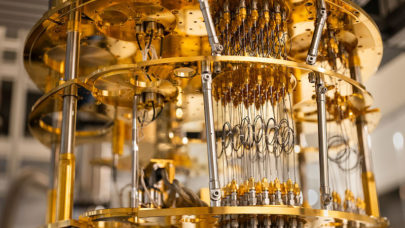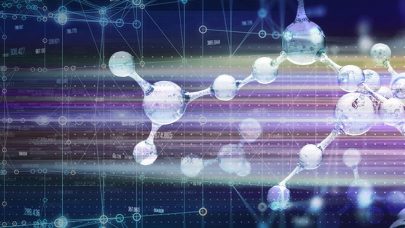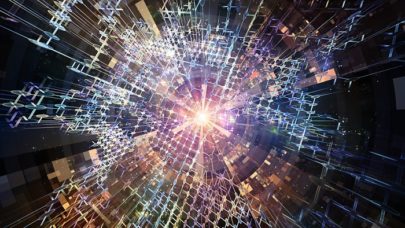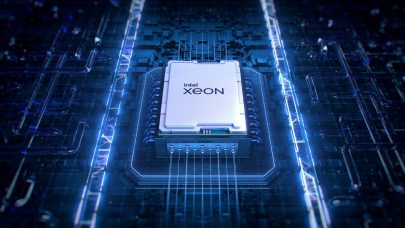Even though the cost of servers still dominates the datacenter budget, storage is actually on a steeper growth curve. Some analysts think HPC storage will exhibit particularly high growth over the next five years. In Tabor Research’s September 2008 report: Traditional HPC 2007 to 2012 Market Model and Forecast, the storage market is singled out:
The storage segment is expected to show the strongest growth of any segment in the traditional HPC market (9.7 percent CAGR 2008 to 2012) and to increase about $1.3 billion by the end of the forecast period. Growth here will be driven by the “data explosion” — new and intermediate data that significantly exceeds the growth in processing power and storage capacity — currently being reported by users across the market. End-user studies conducted by Tabor Research showed roughly 40 percent annual growth in both the number of files and total storage capacity.
Vendors are scrambling to keep up. Storage maker Nexsan Technologies offers a range of storage appliance from modular SAS and SATA boxes to high capacity disk-based archiving systems. The company’s latest product is DATABeast, a high capacity storage array aimed at the HPC and scaled out enterprise applications.
Founded in 1999 in Darby, England, Nexsan is now based in Thousand Oaks, Calif. It sells products across the spectrum of business, from SMEs to large global firms and governmental agencies. Not as visible as other storage vendors, Nexsan delivers its products via resellers, system integrators and OEMs. The company’s most recent hookup was with ONStor Inc., a provider of clustered storage solutions, which will incorporate Nexsan’s SATABeast and SATABoy storage systems into its Pantera line of NAS products.
The company filed for an IPO back in April, but with the investment market being what it is — or rather what it isn’t — going public right now looks like a long shot. Beyond economic uncertainties, the storage market, in general, is in a state of flux right now. The industry is moving from proprietary designs to commodity-based systems in order to place storage costs on the same trajectory with other datacenter infrastructure. But the demand for higher capacity and higher density storage is creating opportunities for storage vendors that can offer products at the right price point.
Nexsan’s overall approach was to bring the cost structure of tier 2 storage to tier 1 systems. For high capacity systems, it took a DataDirect-type of approach and built smart RAID controllers around low-cost SATA drives to deliver enterprise-level reliability. Until recently, Nexsan’s SATABeast storage appliance was the primary product being sold into the HPC space. It provided 42 SATA drives in a 4U enclosure and offered both high capacity and high density with two RAID controllers per enclosure.
The company’s new DATABeast product announced in July is a storage array that can scale into the petabytes realm with a mixture of low-cost SATA and fast-access SAS drives. System enclosures come in two sizes: 25U and 42U, with the larger unit holding up to 336 TB. A single system can be expanded by hooking up additional racks, up to at least 4 petabytes. The DATABeast supports both block access (4 Gbps Fibre Channel) and file access (CIFS, and NFS). The big selling point of the DATABeast is that it incorporates tier 1 management and reliability features — like virtualization, thin provisioning, replication (local and remote), snapshots and synchronous mirroring — at tier 2 prices.
One of Nexsan’s signature technologies available across its product line is the AutoMAID (Automatic Massive Array of Idle Disks) feature. Developed to optimize power consumption for high capacity storage, AutoMAID provides a mechanism whereby the user can configure the system to spin down the disks on idle drives. AutoMAID offers three levels of energy efficiency (with the tradeoff of raising I/O latency) and can be specified on an individual drive or RAID set.
The most conservative AutoMAID setting is level one, in which the drive heads are unloaded. This can save 15 to 20 percent on energy, but still maintain a sub-second recovery time on spin-up. Since most software already assumes a sub-second response on I/O, most application performance is unaffected at this level. Level two unloads the heads and slows the disk to 4,000 RPM. At this setting, 35 to 45 percent energy savings can be realized, but the recovery time to the first I/O is 15 seconds. At level three, the disk drives stop spinning completely (sleep mode), yielding 60 to 70 percent in energy savings and a 30 to 45 second recovery time.
The spin-down behavior can also be programmed with timers, so that levels can be switched after specified periods of disk inactivity. Even heavily-accessed storage will often benefit from the level one setting, since most applications are not constantly engaged in I/O. In HPC it is often typical for an application to load data into memory from disk, crunch the data, and then dump the results back to disk. If the data processing stage is of any length, the disks can be spun down to realize significant energy savings.
According to Bob Woolery, Nexsan’s VP of marketing, the company has made inroads into the HPC space by offering performance and capacity, along with the kind of manageability and reliability features usually reserved for mission-critical enterprise environments — and at a price-point that is “cost-correct” for HPC. MSRP for DATABeast storage starts at $1,000 to $2,700 per terabyte and gets more favorable as systems reach into the 500 terabyte to 1 petabyte realm. “It’s very much a value play,” says Woolery.
Nexsan’s main competition in the HPC market include DataDirect and OEMs like Dell, IBM and Sun Microsystem, as well as whitebox do-it-yourself systems. From an I/O throughput perspective, the DATABeast is somewhere between the highest-end storage represented by systems such as DataDirect’s S2A or LSI 7900 products and offline tape systems, with prices closer to the latter and performance much closer the former. Aggregate I/O throughput for a 42U DATABeast rack system is 3.2 GB/second versus 6.0 GB/second for a DataDirect S2A9900 appliance.
“I think of DataDirect as a Formula One race car that goes around the track doing left-hand turns very, very well. We can do that as well, but we can also do NASCAR and other types of races as well because we have a very broad performance profile and a very high capacity footprint,” explains Woolery.
Nexsan’s strategy seems to be to get its foot in the door with one or two systems, and then impress the customer with its products’ robustness and attractive TCO. Woolery says its gear will be “the most reliable systems in the facility,” claiming that it has the lowest field failure rate in disk drives and components in the industry. With the additional incentive of significant energy savings and the promise of highly dense storage, Nexsan may find a receptive audience in HPC datacenters, large and small.


























































